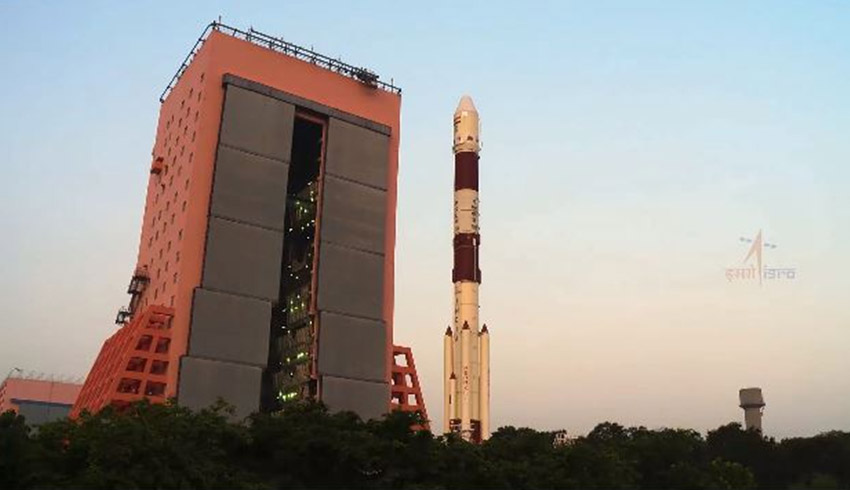But it’s not known if it’s intact and functional, damaged or totally destroyed.
Director of the Indian Space Research Organization (ISRO) Dr Kailasavadivoo Sivan told Indian media a thermal image had been taken by the Chandrayaan-2 mission orbiter showing the lander on the surface.
He said he expected it had experienced a hard landing.
“We are trying to establish a contact,” Dr Sivan said.
ISRO said the descent of the lander, named Vikram, was normal until it was about two kilometres from the moon surface when contact was lost.
That would indicate it touched down near the intended landing in the little-explored southern polar region.
After touchdown it was intended that a rover would spend two weeks exploring the surface and collecting data on mineral and chemical composition and, hopefully, water.
Chandrayaan-2 blasted off from India on 22 July and was intended to touch down on 7 September.
Like Israel’s Beresheet mission to the moon, Chandrayaan-2 showed the difficulties that emerge in the final moments. Beresheet functioned perfectly until something went wrong in descent and it impacted the moon surface at speed.
Had India succeeded where Israel failed, it would have joined a a very exclusive club as just the fourth nation, after the US, Russia and China, to soft land a robotic probe on the moon.
Chandrayaan-2 followed Chandrayaan-1 in 2008 when an Indian probe successfully orbited the moon and launched an impactor, which indicated the presence of water in lunar soil. Chandrayaan is Sanskrit for moon craft.
India sees its space program as a matter of great national presitige.
For nations with emerging space programs, landing on the moon is a particularly alluring achievement.
India, on trajectory to become the world’s fifth largest economy and with a nationalist government in power, sees its space program as a significant indicator of rising global status.
Indian Prime Minister Narendra Modi viewed the moon landing attempt from the space agency control room in Bangalore.
The New York Times said the landing left no room for error, with the delay in communications from the moon to Earth giving the space agency limited control over the descent.
Dr Sivan described the computer-controlled landing as 15 minutes of terror as the lander slowed from more than 3,000km/h to landing speed.
This appeared to go as planned and scientists in the control room cheered.
But then communications cut out at an altitude of about two kilometres.
The New York Times report said they slumped over their desks. A widely distributed showed the Prime Minister embracing Dr Sivan as he began to cry.
The Australian Space Agency tweeted: "The Vikram Lander was just a few kilometres short of realising its mission to the Moon today. To the team at @isro, we applaud your efforts and the commitment to continue our journey into space."
NASA tweeted: "Space is hard. We commend @ISRO’s attempt to land their #Chandrayaan2 mission on the Moon’s South Pole. You have inspired us with your journey and look forward to future opportunities to explore our solar system together."

